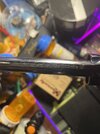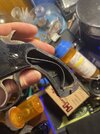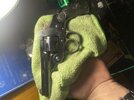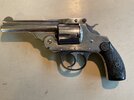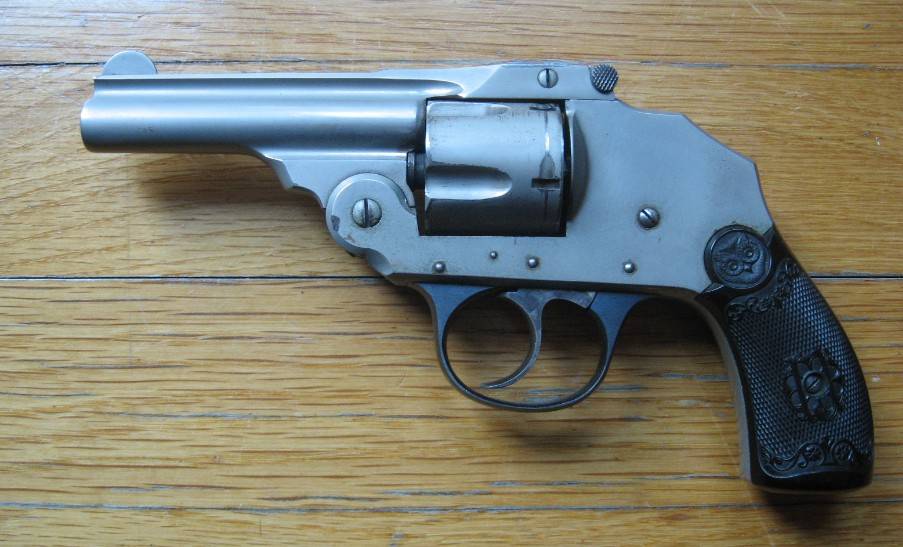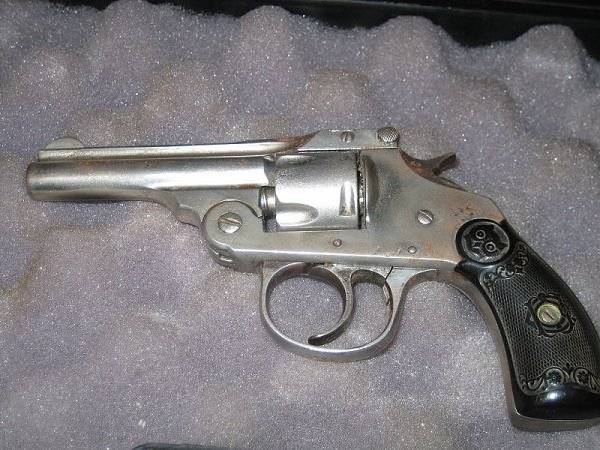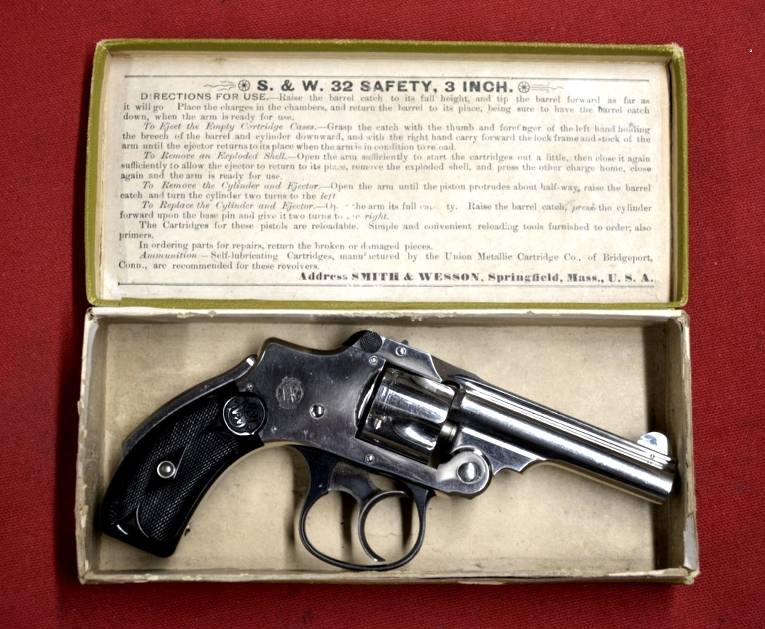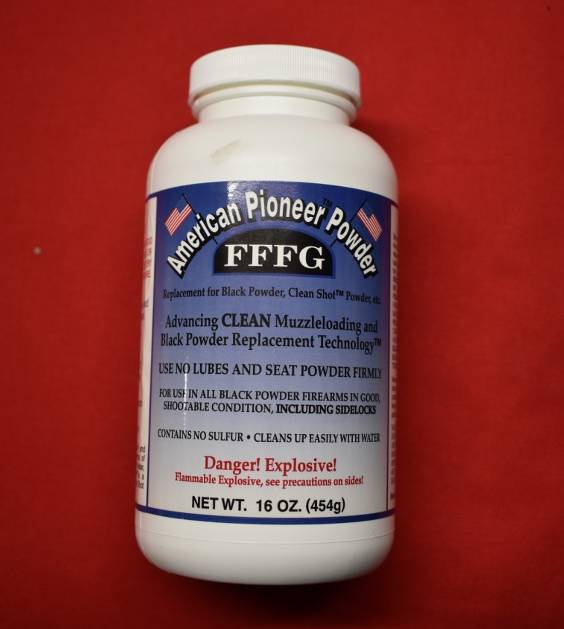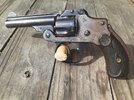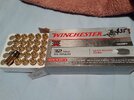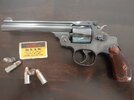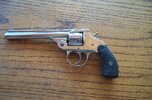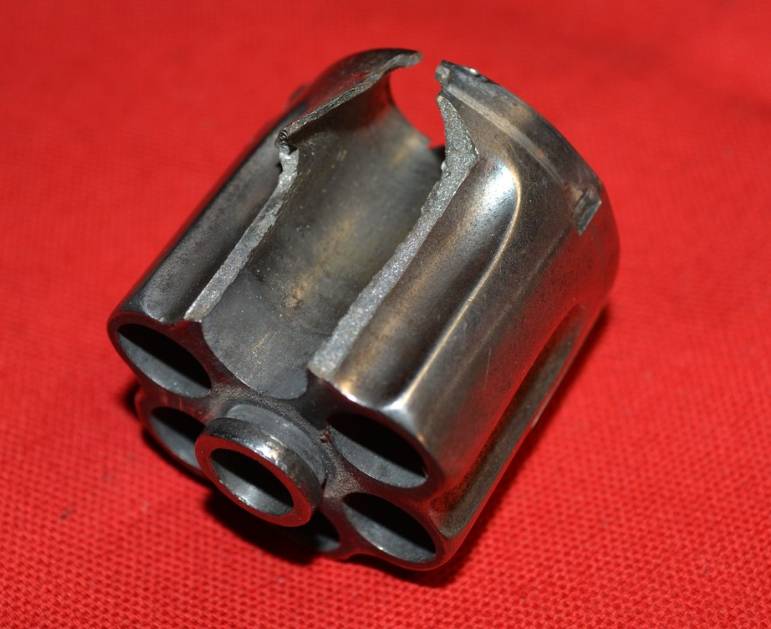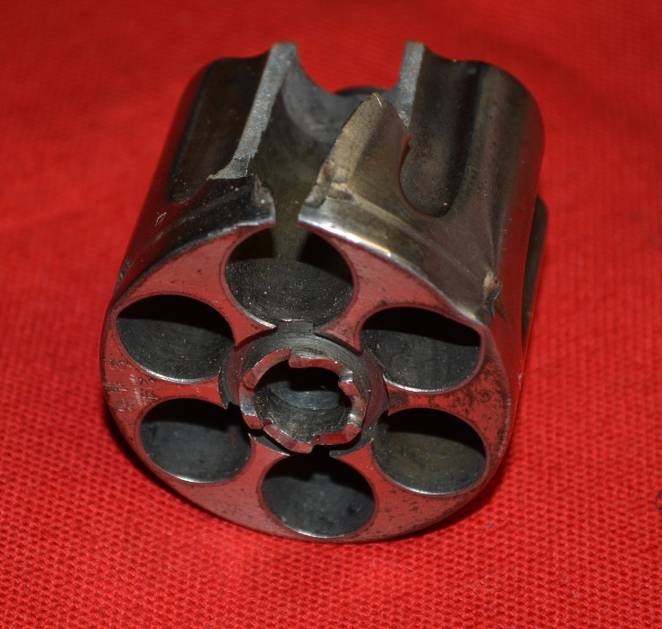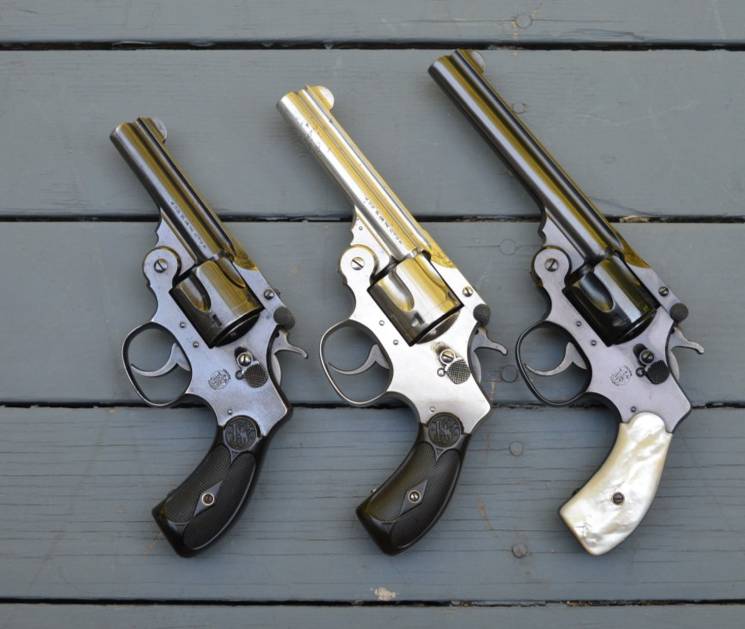I have said this a bazillion times.
It is not the maximum pressure achieved by Smokeless ammo vs Black Powder ammo.
It is the pressure curve.
Ammunition loaded with Black Powder has a much gentler pressure curve than Smokeless ammo.
Smokeless ammo has a much sharper pressure spike than BP ammo.
It is the sharp pressure spike that can cause the older steel (and malleable iron) cylinders of old guns to fracture.
The old steel (and iron) is better able to withstand the gentler pressure curve of Black Powder than Smokeless ammo.
Yes, Grandpa may have put some Smokeless ammo through the old guns, and they may have survived just fine, but you are taking a chance.
Here is a Merwin Hulbert cylinder that did not survive being shot with Smokeless ammo.
I would never dream of shooting Smokeless ammo in any of my large caliber antique #3 Smith and Wessons.
Yes, there are Smokeless powders that can roughly duplicate the pressure curve of Black Powder, but they are not powders most would typically load into handgun cartridges.
Don't ask me for specifics, I argue about this with a guy on the Smith and Wesson forum occasionally, but I do not recall what powders he was recommending.
Regarding the Perfected Models, they were manufactured from 1909 until 1920. Perfectly fine to shoot with ammunition loaded with Smokeless powder.


